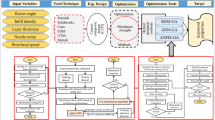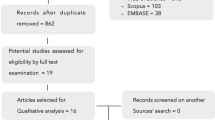To provide the functional adequacy, aesthetic qualities, and durability of the process of restoration of the elements of the dentofacial system, it is required to have the information on the properties of dental materials (physical, chemical, mechanical, technical, biological, etc). The method of acoustic emission is successfully used in the investigations of the materials’ properties providing live information on the development of damage or fracture. The dental polymers of the provisional prosthetic solution have been tested to determine their strength, plasticity, fracture toughness, water absorption, shrinkage, and microhardness. The authors have made a comprehensive ranking of polymers based on the experimental results. Using the energy identification criterion of fracture modes the percentage of brittle fracture for each material has been evaluated during tensile loading. The paper proposes a new express-method of the ranking of polymer materials, which allows one to significantly reduce material costs and time for experimental investigations.





Similar content being viewed by others
References
M. D. Korol’, Material Science in Stomatology [in Ukrainian], Nova Knyga, Vinnytsia (2008).
I. Ya. Pokrovskaya, Dental Material Science [in Russian], GÉOTAR-Media, Moscow (2008).
V. R. Skal’s’kyi, V. F. Makeev, O. M. Stankevych, et al., Method of Acoustic Emission in the Investigation of Dental Polymers [in Ukrainian], Kvart, Lviv (2015).
V. Rakhshan, “Marginal integrity of provisional resin restoration materials: A review of the literature,” Saudi J. Dent. Res., 6, No. 1, 33–40 (2015).
D. Astudillo-Rubio, A. Delgado-Gaete, C. Bellot-Arcis, et al., “Mechanical properties of provisional dental materials: A systematic review and meta-analysis,” PLoS One, 13, No. 2, e0193162 (2018), https://doi.org/10.1371/journal.pone.0193162.
O. M. Stankevych, “Use of wavelet transforms of acoustic emission signals for the assessment of macrofracture of structural materials,” Tekhn. Diagn. Nerazr. Contr., No. 1, 36–44 (2015).
V. Skalskyi, V. Makeev, O. Stankevych, and R. Pavlychko, “Features of fracture of prosthetic toothendocrown constructions by means of acoustic emission analysis,” Dent. Mater., 34, No. 3, e46–e55 (2018).
X. Liu, H. Li, J. Li, et al., “An acoustic emission study on interfacial debonding in composite restorations,” Dent. Mater., 27, No. 9, 934–941 (2011).
C. L. Lin, W. C. Kuo, J. J. Yu, et al, “Examination of ceramic restorative material interfacial debonding using acoustic emission and optical coherence tomography,” Dent. Mater., 29, No. 4, 382–388 (2013).
B. Yang, J. Guo, Q. Huang, et al., “Acoustic properties of interfacial debonding and their relationship with shrinkage stress in Class-I restorations,” Dent. Mater., 32, No. 6, 742–748 (2016).
K.-H. Kim, J.-H. Park, Y. Imai, and T. Kishi, “Fracture toughness and acoustic emission behavior of dental composite resins,” Eng. Fract. Mech., 40, Nos. 4–5, 811–819 (1991).
P. K. Vallittu, “Use of woven glass fiber to reinforce a composite veneer. A fracture resistance and acoustic emission study,” J. Oral Rehabil., 29, No. 5, 423–429 (2002).
N.-S. Choi, J.-U. Gu, and K. Arakawa, “Acoustic emission characterization of the marginal disintegration of dental composite restoration,” Compos. Part A-Appl. S., 42, No. 6, 604–611 (2011).
V. I. Ortega, A. Kaplan, M. P. Gomez, et al., “Characterization of metal/ceramic interfaces in dental materials by acoustic emission,” Proc. Mater. Sci., 8, 683–692 (2015).
V. I. Ortega, M. I. L. Pumarega, N. Nieva, et al., “Adhesion study in metal-ceramic systems of dental restoration by acoustic emission,” Proc. Mater. Sci., 9, 477–483 (2015).
V. R. Skal’s’kyi, V. F. Makeev, O. M. Stankevich, et al., “Strength evaluation of stomatologic polymers by wavelet transform of acoustic emission signals,” Strength Mater., 47, No. 4, 566–572 (2015).
V. R. Skal’s’kyi, V. F. Makeev, O. M. Stankevych, et al., “Alternation of the types of fracture for dental polymers in different stages of crack propagation,” Mater. Sci., 50, No. 6, 836–843 (2015).
V. R. Skalsky, B. P. Klym, R. M. Plakhtiy, et al., “Portable system SKOP-8Ì for measurement and analysis of acoustic emission signals,” Sci. Innov., No. 3, 20–29 (2010), https://doi.org/10.15407/scin6.03.020.
GOST 25.506-85. Strength Calculations and Tests. Methods of Mechanical Tests of Metals. Determination of Crack Resistance (Fracture Toughness) Characteristics under Static Loading [in Russian], Valid since March 27, 1985.
V. M. Pestrikov and E. M. Morozov, Fracture Mechanics of Solid Bodies [in Russian], Professiya, Saint Petersburg (2002).
O. Stankevych and V. Skalsky, “Investigation and identification of fracture types of structural materials by means of acoustic emission analysis,” Eng. Fract. Mech., 164, 24–34 (2016).
M. Balkenhol, P. Ferger, M. C. Mautner, and B. Wöstmann, “Provisional crown and fixed partial denture materials: mechanical properties and degree of conversion,” Dent. Mater., 23, 1574–1583 (2007).
E. R. Kerby, L. A. Knobloch, S. Sharples, and A. Peregrina, “Mechanical properties of urethane and bis-acryl interim resin materials,” J. Prosthet. Dent., 110, No. 1, 21–28 (2013).
M. Balkenhol, M. Meyer, K. Michel, et al., “Effect of surface condition and storage time on the repairability of temporary crown and fixed partial denture materials,” J. Dent., 36, No. 11, 861–872 (2008).
M. Balkenhol, H. Köhler, K. Orbach, and B. Wöstmann, “Fracture toughness of cross-linked and noncross-linked temporary crown and fixed partial denture materials,” Dent. Mater., 25, No. 7, 917–928 (2009).
Protemp TM 4, http://multimedia.3m.com/mws/media/597787O/protemp4-protempcrown-clinicalresults.pdf (accessed 21.05.2018).
V. G. Chaika, L. M Muntyan, and T. I. Yushchenko, “Investigation of degree of water absorption of elastic materials for the production of two-layered bases of removable dentures,” Ortoped. Stomat., No. 2, 131–133 (2002).
Author information
Authors and Affiliations
Corresponding authors
Additional information
Translated from Problemy Prochnosti, No. 3, pp. 78 – 89, May – June, 2019.
Rights and permissions
About this article
Cite this article
Skal’s’kyi, V.R., Makeev, V.F., Stankevych, O.M. et al. Express-Method of Ranking of Polymer Materials by Energy Criterion Identification of Fracture Mode. Strength Mater 51, 388–397 (2019). https://doi.org/10.1007/s11223-019-00085-6
Received:
Published:
Issue Date:
DOI: https://doi.org/10.1007/s11223-019-00085-6




